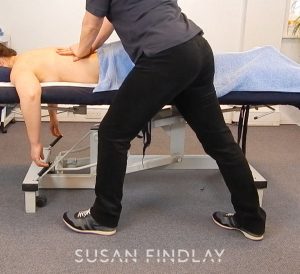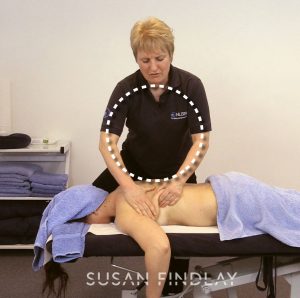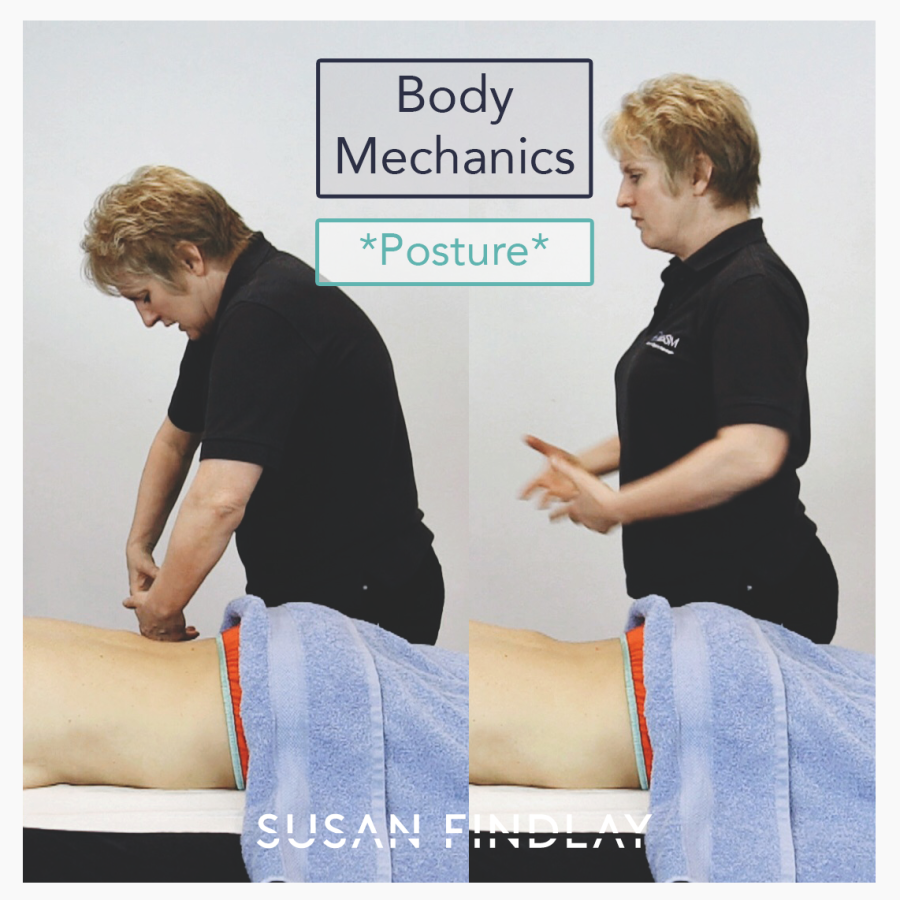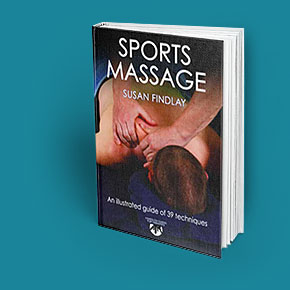This is the second blog in my body mechanics series. I decided to write this series because good body mechanics is the foundation of all practical massage techniques. I hope that through my writing and videos I can help you on your way to a long and successful career, free of personal injury.
This blog in the series is going to focus on our working posture. As massage therapists, we are on our feet for several hours a day. Because of this, using our body correctly while massaging is of the utmost importance.
If we get it wrong, even slightly, due to the regularity in which we work in the same, or similar positions, we risk repetitive muscle injury or even joint pain related to misalignment.

There are a few guiding principles which, if followed, will enable you to develop the most effective working posture:
Your shoulders and hips should remain square, facing the direction of the stroke – This allows the energy to come from your legs without requiring you to rotate, which would put stress on your lower back.
Keep your stance wide – This allows you more freedom of movement.
Keep your arms approximately 30 degrees away from your body – This will help you to generate momentum from your legs and through your body. It also stops you from pushing tissue into bone.
 Create a circle with your arms – Circling is one of the ways that enables you to work efficiently, applying power and strength without effort.
Create a circle with your arms – Circling is one of the ways that enables you to work efficiently, applying power and strength without effort.
Keep your arms straight but elbows soft – Bent arms interrupt the alignment of your body and reduce the strength you have coming from your legs.
Where possible, movement should come from the legs, not arms – This will help you keep your arms relaxed. Relaxed arms mean you are able to use a strong touch without being invasive or pokey. Equally if you have any unnecessary tension in your upper body, arms or hands it will be transmitted into the stroke.
Maintain long levers – This should be what you aim for overall when thinking about your movement and positioning. Imagine a long pole that starts at the base of the feet and then moves through the hips to the top of the head. In doing this you will have the ideal posture for force, whilst also being able to bend your joints. The idea is not to collapse into the movement by bending too much, but to keep as long a lever system through your arms, hips, torso and legs as possible. The aim with this is to allow the whole of the body to work together, rather than a portion of a limb or body part working independently. For example, if you bend too much at the waist it will put pressure on the lower back and prevent most of the power from being generated from the legs through the arms. It also changes the quality and depth of the stroke, so when you want to go deeper you will be forced to use a lot more effort in the upper body in order to increase your depth. If you have the technique right you will find it easy and won’t tire.
Get into the habit of checking your posture every 15 minutes or so whilst you work – that way it will become like second nature for you to correct yourself if needed.
If you don’t follow these principles then your other muscles will be working overtime in order to try to adjust to your poor posture. This may result in a variety of issues such as poor circulation, pain, muscle aches and stress, energy imbalances, among many others. As massage therapists, we are used to helping others with these exact issues, but we must make sure that in helping others with their symptoms, we don’t neglect our own. Therefore, as much as possible, keep to the working posture principles presented in this article. At times you may need to work with just one arm, open up your hips or rotate your torso, however if these situations are infrequent, they will not have any long-term effects.
Lastly – we need to be good examples for our clients if we want them to trust us and return again and again. If we are telling our clients how to correct their own posture and look after their bodies in their daily activities, we need to be making sure that we are aware of how to look after ours. It’s very important that we have a good routine of self care – take regular exercise, practise yoga or pilates, mobilize before and after massaging a client, always drink plenty of water and make sure you get regularly massaged yourself!

